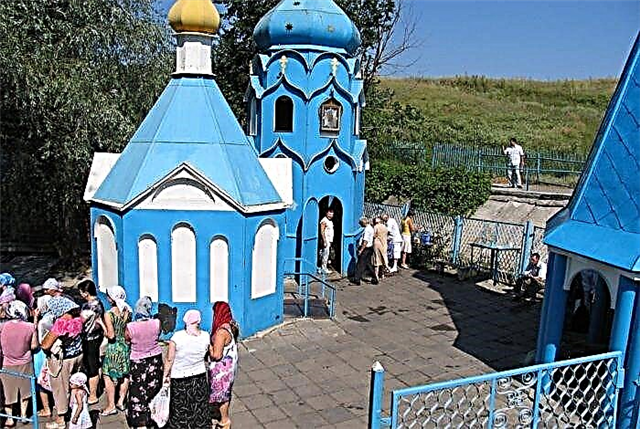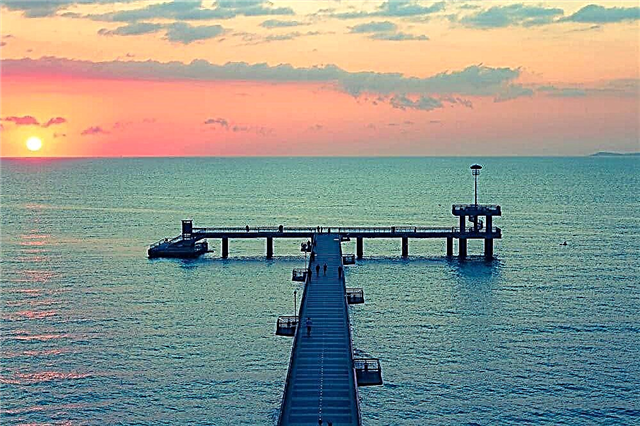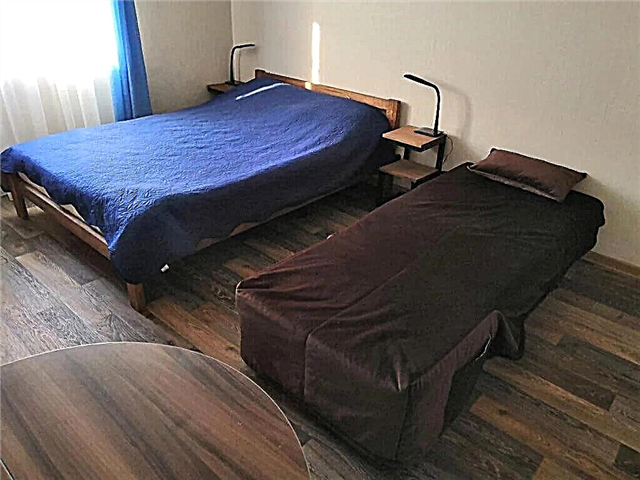The sights of Samara and its environs are varied. Along with fashionable eco-tourism, the usual directions are developing in the form of preserving architectural monuments or artistic heritage. Enterprises of the region are famous outside the country, so a visit here for curious travelers will not be superfluous.
Significant places of the region belong to different periods of history, the more fully the change of time is felt here. With good infrastructure and a busy tourist schedule, a trip to the Samara region can be a pleasant addition to your vacation. Short trips also have something to see to remember the adventure forever.
The most interesting and beautiful places in the region
List, photos with names and descriptions of popular attractions!
Zhigulevsky reserve
Founded in 1927. Located on Samarskaya Luka. The city of Zhigulevsk is located closer than others. The total area is more than twenty-three thousand hectares. The main part of the territory is forests. The flora and fauna are diverse and characteristic of the area. There are also rare specimens protected with special zeal. Visiting the territory is possible only as part of guided excursion groups.

Observation deck "Helicopter"
Located in the village of Administrative. Before the Second World War, the country's leadership had big plans for this territory. However, the project for the construction of a hydroelectric power station was curtailed, and the settlement remained. The helipad has become a place of leisure and an opportunity to look at the panoramic view. The developed infrastructure makes your stay here truly comfortable: there is a parking lot, a cafe, a park nearby.

Stalin's bunker in Samara
Built in 1942 and declassified in 1990. Was supposed to become the reserve headquarters of the command during the Second World War. The bunker was dug at a depth of thirty-seven meters. Located under the building of the Academy of Culture. The premises were never used for their intended purpose, but Stalin's daughter was hiding here, and the secretary general could visit the bunker. There is a museum inside and guided tours using modern technology.

Zhigulevsky brewery
Founded in 1881. Located on the banks of the Volga. It was here that the production of Zhiguli beer began. Since its inception, it has never stopped developing and has always been at a high level, received state awards and prizes at exhibitions. Over the years, it bore different names, one way or another related to the original. The fight for the trademark continues.

National Park "Samarskaya Luka"
Founded in 1984. Occupies an area of more than one hundred and thirty hectares. The park is spread over the territory of several districts and is divided into five forest districts. The terrain changes from mountainous to floodplains. The Volga feeds the entire park. The dams led to the creation of two reservoirs on it. Natural monuments are found everywhere: mountains, caves, mounds. There are also full-fledged museums, for example, the Repin House or the Museum of History and Life.

Museum "Samara Space"
Opened in 2001. The exhibits are all related to the theme, many are unique. The SOYUZ rocket, assembled and in full readiness for take-off, is one of them. During the excursion, you can learn about the life of astronauts, look at the simulators and means of their usual use. There is a permanent exhibition, changes are made only on special occasions. Some models are interactive and are allowed to be touched.

AvtoVAZ Museum in Togliatti
The domestic auto industry, judging by the exhibits, had the makings of an organizer of revolutions in mechanical engineering, but it did not work out to prove itself. On the basis of the Technical Museum, prototypes of VAZ models are collected in one place, including bold experiments that have not been implemented. Whimsical shapes and cutting-edge functions coexist with classics and rarities. In the absence of a guide, tourists can look around on their own.

Iversky Convent
Founded in 1850 and was originally a women's community. Ten years later it became a full-fledged monastery. In 1925 it was closed for ideological reasons. Already after Perestroika, it began to recover and returned to its previous status. There are several temples and chapels on the territory. At different times, especially valuable relics were kept within the walls of the monastery - icons, crucifixes, relics, books, etc. And the local choir is the decoration of the neighborhood.

Syzran Kremlin
Built in 1683. Initially, it had five towers: four wooden and one stone. Until now, only the last one has survived. Above it, under the domed vault, there is a belfry. An alley with flowers was broken in front of the Spasskaya Tower, and a memorial in honor of the fallen soldiers was dug nearby. There is a functioning church on the territory of the Kremlin. It is a cultural heritage site.

Museum "Motorworld of Vyacheslav Sheyanov"
A collection of motorcycles from different periods from a dozen countries. The founder has been collecting his rarities for years. From several non-working and unsightly copies, he ended up with one motorcycle, but it looked perfect. Most of the models are on the move and can compete in speed with their contemporaries. You can visit the museum, both as part of an organized excursion, and on your own.

Tsarev Kurgan
First mentioned in 1636. Located near the village of Volzhsky. The unusual shape of the hill, reminiscent of a feast table, made this place attractive for the camp of noble people. Among them: Peter I, Tamerlane, Stepan Razin and others. The legends and real stories associated with the mound are no longer separable. A church was built nearby, right above the holy spring. Traces of a settlement of ancient people were found nearby.

Zhigulevskaya HPP
Construction began in 1950, and was finally commissioned in 1957. Located on the Volga in the city of the same name. Reconstruction was carried out in the late 90s. During the construction, many details were taken into account. Two platinum complements each other - earthen and drainage. Shipping locks allow ships to navigate the river without problems. The local reservoir is one of the largest in Europe.

Museum complex "Heritage"
Located in the Old Town in Togliatti. Located in the house of the shoemaker Starikov. It was dismantled at the family's former residence in Stavropol and transported to a new one. The exposition tells about the forced relocation of people; many things from that time have survived. There are also fragments of the Trinity Cathedral, blown up in 1955, as well as a shot icon donated to the museum.

Garibaldi Castle
Construction was partially completed in 2014. Nearby you can take pictures and inspect the complex itself from the outside. It is stylized as a neo-gothic castle. Upstairs there is an observation deck overlooking the Volga. Nearby, there are statues with a medieval theme. The project includes not only the main building, but a park, entertainment area, cafes and restaurants, guest houses and more.

Bogatyrskaya Sloboda
Located on the banks of the Usa River. The main building is made of wood on a massive high foundation. The whole town was built in the style of ancient Russian architecture: huts, towers, chambers, places of entertainment. There is a national park nearby, and the local nature is picturesque and fraught with many interesting things. A recreated boat with a bright sail is “parked” by the coast for most of the year.

Holy Mother of God Kazan Monastery in Vinnovka
Founded in 2006. Three years earlier it was a courtyard of another monastery, but it gained independence. The complex includes: temples, a hospice, residential buildings, a bell tower, more like a lighthouse. There is a library and a museum inside the monastery. The coast was fortified, a pier was built. Monks breed sterlet and release it into the river, thereby compensating for the damage from the use of water resources.

The Brothers Greve Cave
Opened in 1904. It is located in the Falcon Mountains on the territory of Samara.Its length is half a kilometer, and its depth is ten meters. It is of interest to archaeologists and paleontologists. They found traces of the camp of people of the Bronze Age, as well as the remains of ancient animals, whose relatives have not survived to this day. According to legend, the children of a migrant pharmacist from Germany, Greve, found the cave while wandering around and were the first to explore it.

Park complex of history of technology named after K.G. Sakharov
Founded in 2011. Located in the open air. The exposition is divided into three zones. In addition to the submarine, which stands separately, there are collected examples of military, railway, space, engineering equipment and so on. The total number of exhibits is about five hundred. You can travel around the complex either with a guide or on your own. There is a cafe on the territory, and those who wish can go karting.

The adits in Shiryaevo
They are located near the village of the same name. Previously, limestone was mined in the adits, now they are abandoned. You can wander through man-made tunnels and labyrinths for hours. Activists conduct guided tours, telling their story to tourists. Camel Mountain is not far from here. The highest point is 326 meters. A beautiful pitchfork opens up from the top of the local beauty. A favorite destination for rock climbers and photographers.

Grushinsky festival
It has been held since 1968 near Samara. Named after the bard Valery Grushin. It takes place on two sites and gathers tens of thousands of performers of author's songs from all over Russia and from neighboring countries. The main festival was based on the Fedorov Meadows, but after the unification of the two communities, once arguing with each other, moved to the Mastryukov Lakes. The latter are a natural monument. Their total area exceeds three hundred hectares.

Kazan Cathedral in Syzran
Built in the middle of the 19th century in the eclectic style. Took the place of the demolished monastery. In 1906, the five-domed cathedral was the only building in the area that was not damaged during a large fire. Services in the temple were not conducted from the beginning of the 30s until the end of the war. At the moment, several significant icons are kept here, as well as a particle of the relics of St. Nicholas the Wonderworker.

Povolzhsky Museum of Railway Engineering
Opened in 2010. It is located in a former open-air training ground. The total area of the exhibition area is one and a half hectares. The old railway station of the Dashkovo station is two in one: both a museum exhibit and an administrative building. Among the exposition you can find trains of different years. There are passenger and freight cars, diesel locomotives and much more. They are all in excellent condition. Inspection takes place both with a guide and independently.

Blue Lake
Local natural monument. Located near the village of Staroe Yashkino. It was first mentioned in research documents in 1768. Another name is "Dead". It is due to the small amount of flora and fauna. It is filled from an underground source. The diameter of the lake is forty two meters. In 2013, the bottom partially collapsed. The depth limit is now twenty-one meters.

Mount Svetlka
Located near the village of Volzhsky cliff. An attractive place for tourist walks. It is best to descend on a ski lift, which is built specifically for skiers. The mountain is often compared in terms of energy with Stonehenge and the pyramids. Anomalous phenomena often occur here, and witnesses point to UFOs appearing nearby with enviable consistency.

Holy spring in the village of Tashla
More than eighty years ago the icon "Deliverer from Troubles" appeared here, and together with it in 1917 a spring was formed. The spring water is considered curative. A temple was built nearby. The village attracts pilgrims from all over the country. They not only drink water and take it with them for loved ones, but also spend some time at the source, hoping for enlightenment.

Center for Historical Modeling "Ancient World"
It is located on the Chapaevka River, not far from the villages of Kamenny Brod and Kolyvan. The life of the peoples of the middle Volga region has been recreated on a spacious open-air territory. Visitors act both in the role of outside observers and in the role of direct participants. Ancient customs, tournaments, craft workshops, exhibitions of household items - there are a lot of classes and expositions. Finally, guests are treated to traditional tea.

Racheysky Bor
Founded in 1983. Natural monument. Occupies an area of over a thousand hectares. It is located near the village of Staraya Racheyka. You can visit the protected area, but with a number of restrictions on human activities. Fauna and flora are diverse. There are rare species, including specially protected ones. The relief of the territory changes smoothly. A large area is occupied by pine forests.

Temple of the Sacred Heart of Jesus in Samara
Built in 1906 in the neo-gothic style. Belongs to the Catholic denomination. It functioned until the end of the 20s of the last century. Then it was closed, suffered from marauders. Before the Second World War, it housed a museum of local lore. Since the mid-90s, after the restoration, it has been receiving parishioners. The final touch was the installation of crosses on the spiers. It is open for excursions, music evenings and a Bible club.

Tract "Stone bowl"
It is located in the Zhiguli nature reserve. The bowl is surrounded by five ravines and five mountains. A mountain path leads here, and there is also a road. Three springs nearby have crystal clear water. In 2002, a stone chapel was built next to one of the springs. Since the popularity of the tract is growing, the flow of tourists has negatively affected the ecology of the region. This problem is currently being worked on.

Samara embankment
Stretched for five kilometers. A panoramic view of the Volga opens from different sites. The embankment is quite wide, convenient for walking and even for holding various events and festivals. The terraces lead down to the water. The division into plots is very conditional, associated more with the development plan than with thematic zones.












